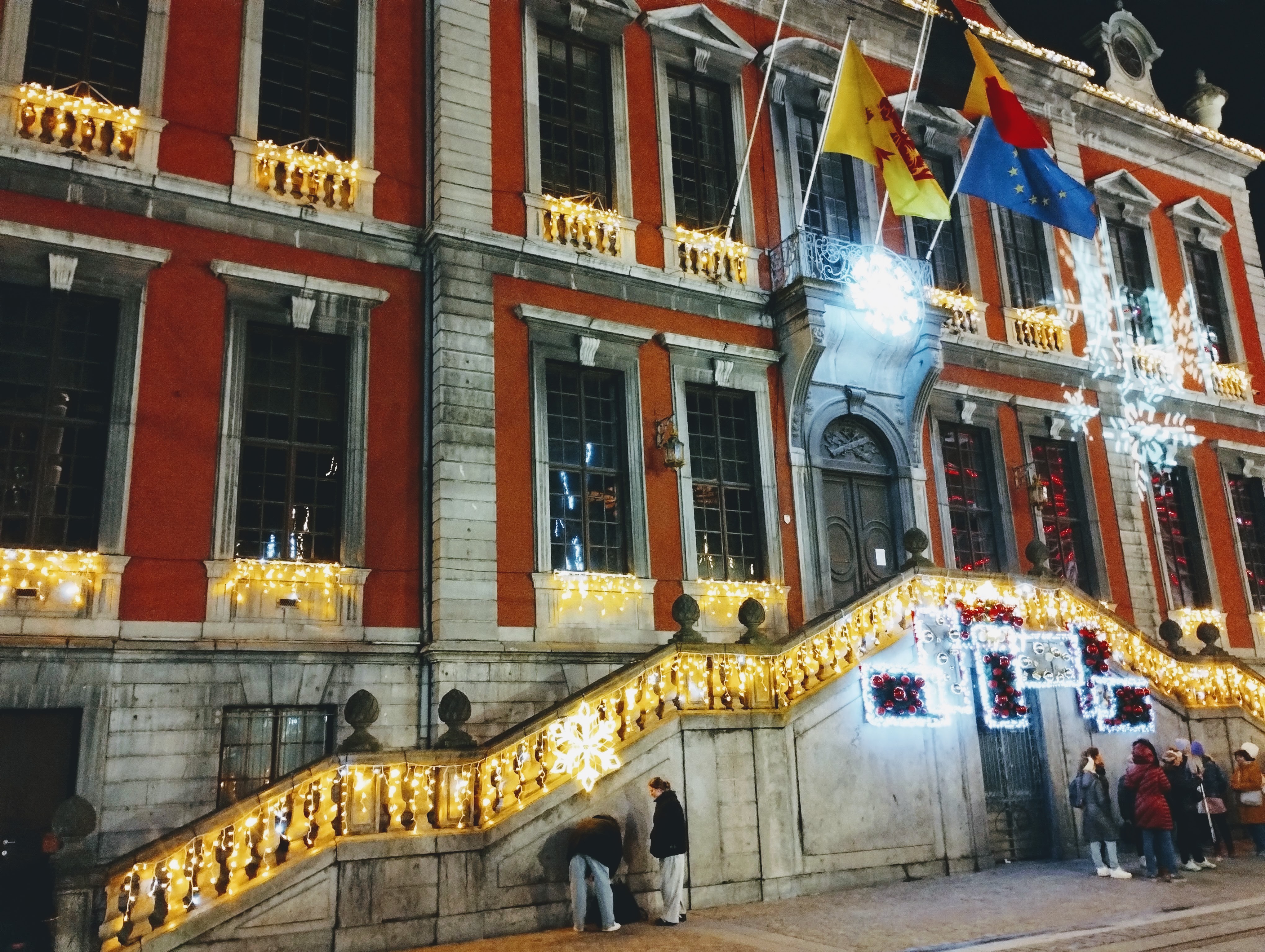Sparkly-tat tour, day twelve: Essen - Liège
'arken! 'erald angels sing.
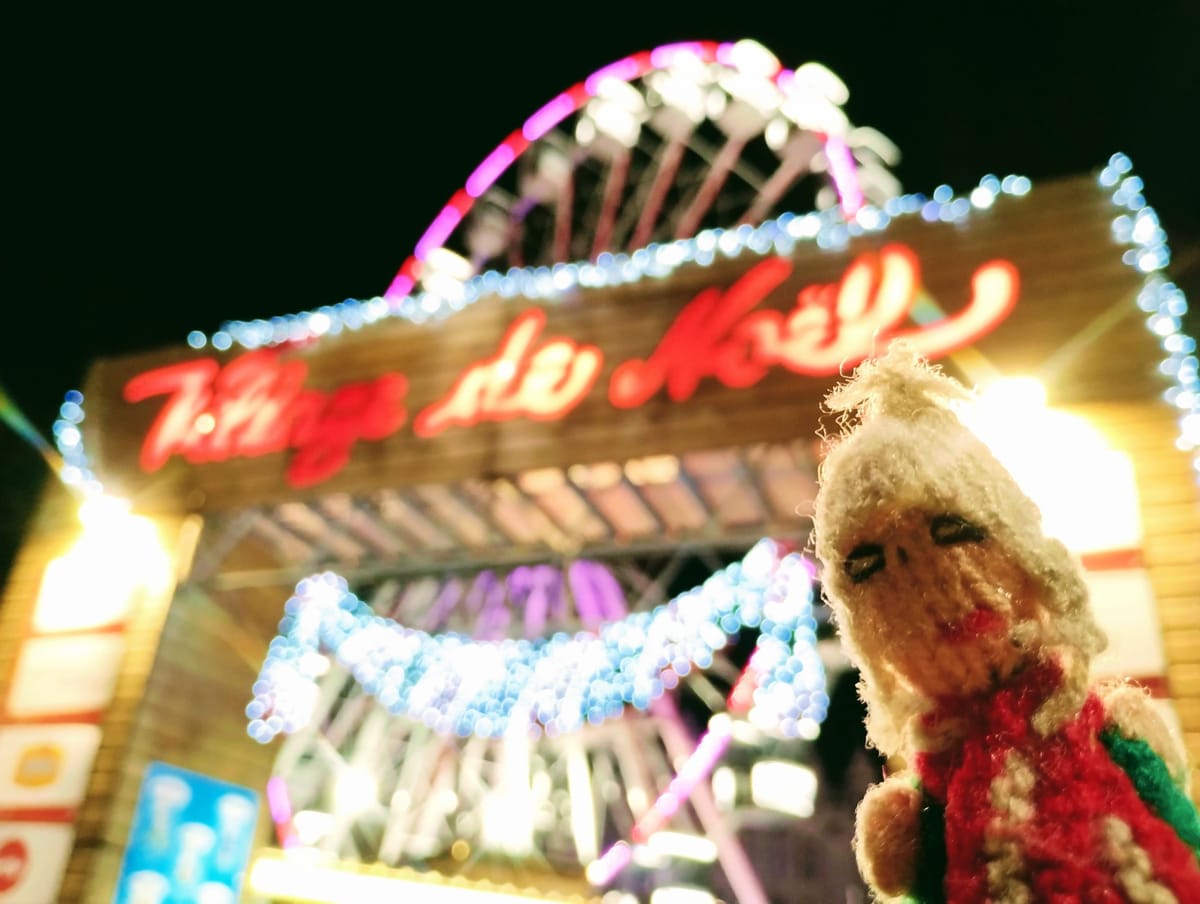
While I was planning this trip (planning doing some heavy lifting there), I didn't really know what to do with this journey.
At only two-and-a-half hours, the journey between Essen and Liège is a short and swift affair. While some people might enjoy being whisked from A to B, I'd much rather go via somewhere obscure or at least have a longer journey with time to graze. As chance would have it, there is no direct service between Essen and Liège so I had the opportunity to choose between a bonus Christmas market in either Cologne or Aachen. The precision in Mr Host's Teutonic plan-making last night was awe-inspiring, and as he'd given me train times and also timed my steps per-second, I believed him when suggested that the Christmas market in Cologne on a Sunday would be an absolute nightmare and that Aachen would be a better bet. I've also not been to Aachen before, so there's a first time for everything.
I deliberated this morning because I did wonder briefly about going on a later train and not having a bonus market as I was a little groggy from the night before, but then I was reminded I would not have time for Glühwein if I didn't leave on the prescribed train. Hostess dropped me at the station and accompanied me to my train, perhaps to ensure I was actually leaving, and sent me on my way with a bottle of Essener Weinachtsbier which I decided against drinking from the bottle on the train for reason of keeping it classy. By all accounts taking the earlier train was the right thing to do as only an hour later, Mr Host gave up altogether on his as it was delayed due to "Syrians having a loud annoying party" at the station which seemed to have brought things to a grinding halt.
The 12:09 to Aachen was lovely, but full of horrible people too lazy to lift their plethoric luggage onto the omnipresent luggage racks and instead decided to just plonk them anywhere or use up table seats for four with only two ticket-paying passengers. I fear this sort of behaviour triggers me more than it should, but I ventured to indicate to the woman putting her bags against the door to the cab where a red and white sticker of a suitcase with a big red line suggested we shouldn't put bags there, only to be shrugged at. It wasn't a Gallic shrug, so I just had to assume that Germans don't like rules after all, a most disappointing rupture of a stereotype. I took an instant dislike to her. Some terrifying trout sat next to me for some of the journey, phone surgically attached to fin.
We arrived about ten minutes late at Aachen and after a quick shop for some chocolate to break a note, I found the left luggage facilities, left my luggage, and started my bonus tourism. I stopped at the front of the chunky no-nonsense station for a quick photo opportunity of seasonal sparkles and a tree next to the DB sign, then bravely soldiered past the shouty people and power-touristed to the cathedral past a group of people having a loud but not annoying party with flags and shouting at the Elisenbrunnen pavilion. A few hundred metres from there later, and I was in the thick of sparkles.
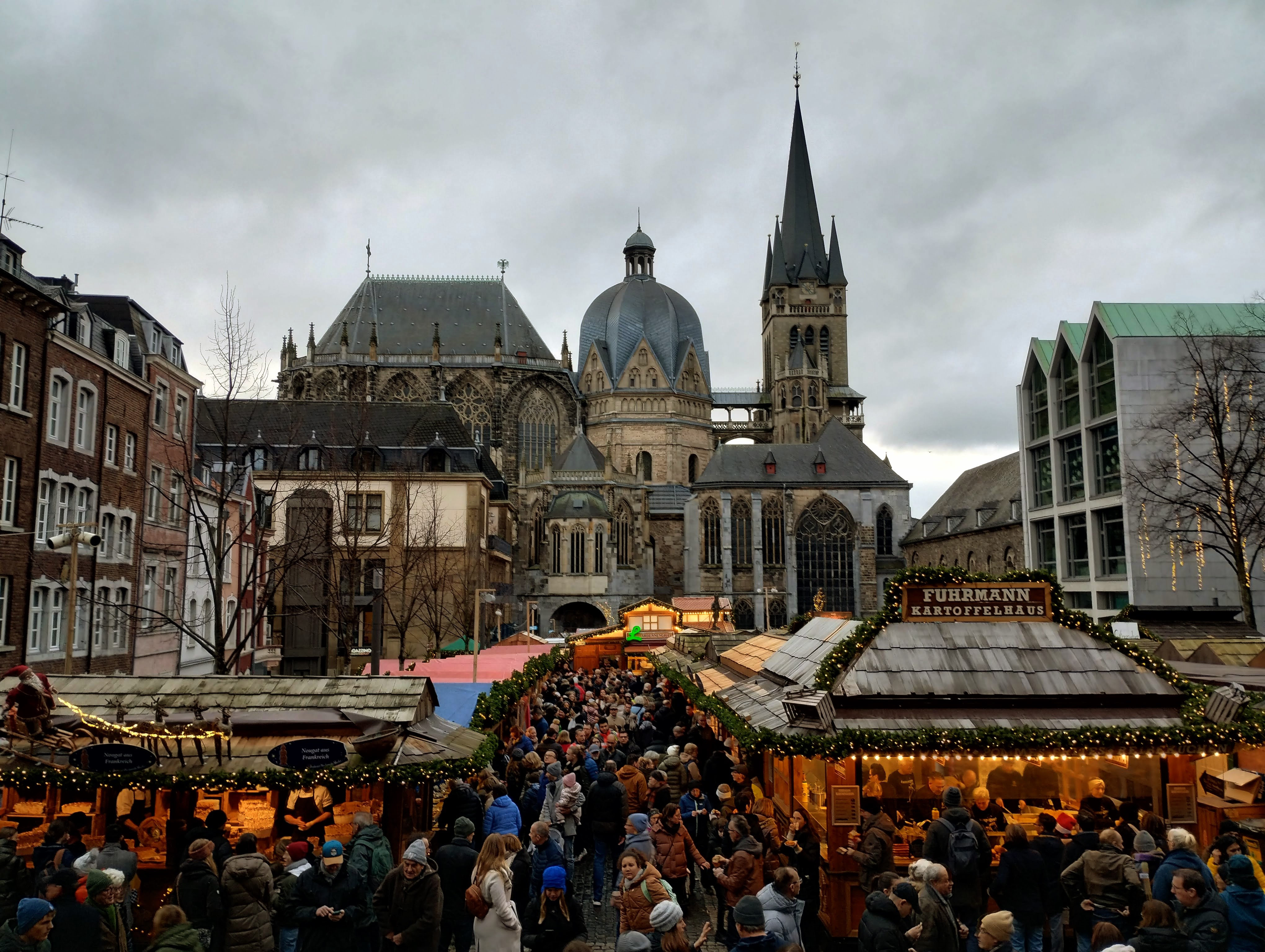
The market is helf on the Katschhof, a big square between the town hall and the cathedral. Originally, it was the inner courtyard of the palace of Charlemagne the Great, when the connecting buildings were the King’s Hall and Marienkirche respectively. It's quite compact for a Christmas market, which means it's easy to take in all of the sparkly goodness quite quickly. Sadly, it was daylight and so I didn't get to see it in all its glory but it's probably very nice.
The cathedral, which is hugely imposing from the outside, seems deceptively small inside. Perhaps some bits were tactically closed off or I wasn't being very observant, but it wasn't really a problem, as the small bit that was available was utterly stunning. When it was built, it was constructed as the private royal chapel of Emperor Charlemagne, so in that respect it's an obscenely large chapel, but as a cathedral it's really rather dinky. Nonetheless the interior is thoroughly magnificent, if not a little cramped, and joyfully gaudy.
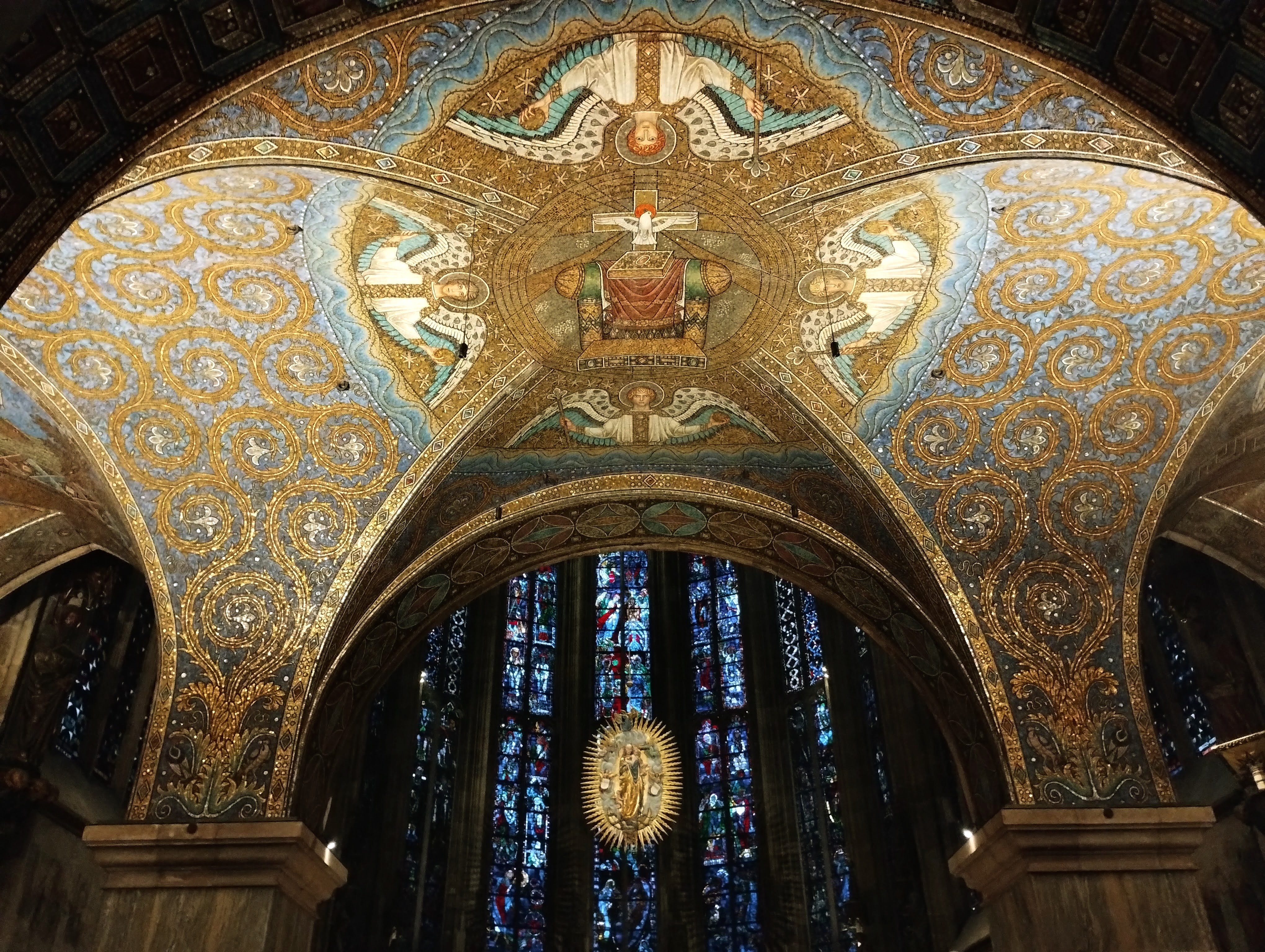
The first part to be constructed in the ninth century was the octagon, now the centre of the cathedral, but it's roped off so you can't get a decent sense of the scale of looking up (do look up). Added in the 14th century is a choir hall and capella vitrea or glass chapel, which was inaccessible for my visit but astonishingly pretty from a distance with stained glass windows that reach for the heavens.
My visit was somewhat hurried for a variety of reasons: the constant ushering past of a continuous stream of chattering camera-wielding tourists (myself included) looking at Charlemagnes remains, the short amount of time available between slightly delayed trains, and the calling of a bonus Glühwein on the market. The latter was served in a china boot, which I supped on delicately in the food and drinks section tucked under the south wing of the cathedral until it was time to make my way back to the station for the 16:21 to Liège Guillemins, my final stop.
The single-stop ICE journey was twenty minutes, not even enough time to become properly incandescent at a battery of phones pinging welcome messages as we crossed into Belgium.
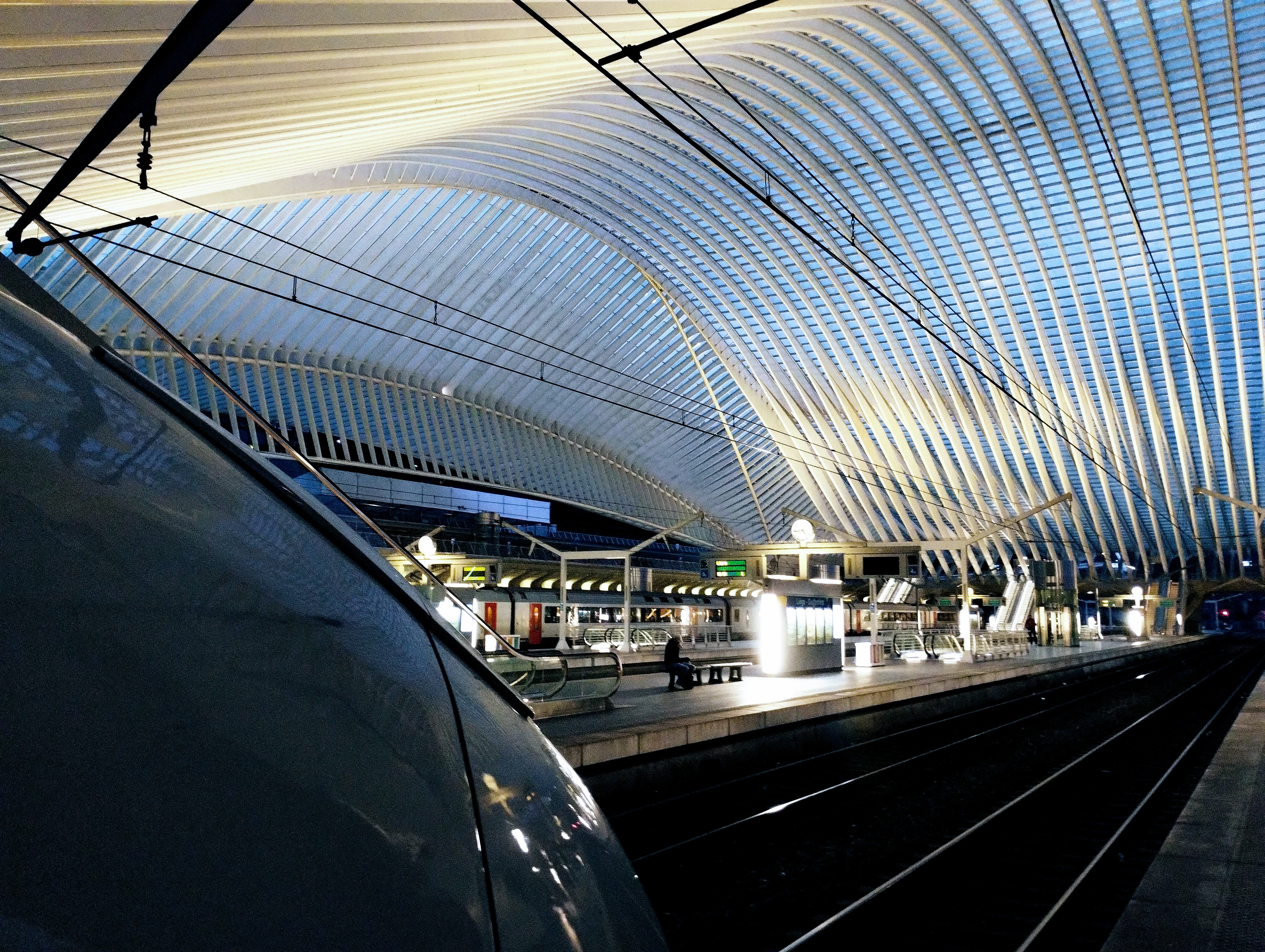
Liège Guillemins is a curious mix of breathtaking and banal.
The first station, a wooden construction, was erected on the site of the former convent of the Guillemites in 1842. This location was not the people's choice but it was chosen for technical reasons and in 1843, the connection linking Liège to Aachen and Cologne became the first international rail connection in the world. By the end of the 20th century, the previous station and platforms had become too small for international and high-speed operations and so a new station was required.
The new station is made of steel, coloured glass, and white concrete, topped off with monumental arch which spans over the wide steps that lead down from the platforms to the parvis below in an architectural style that I shall descibe as pointy and swooshy. The dominating arch is 160 metres long and 32 metres high, and while in my mind's eye I skipped down the massive steps underneath to the parvis flinging pigeons aloft in my wake like a film star meeting a lover holding a brown paper bag full of bottles, I was actually carrying ten kilos of backpack and regretting my choice not to use the escalator, proceeding gingerly and with little grace so as not to plummet ungraciously to the bottom.
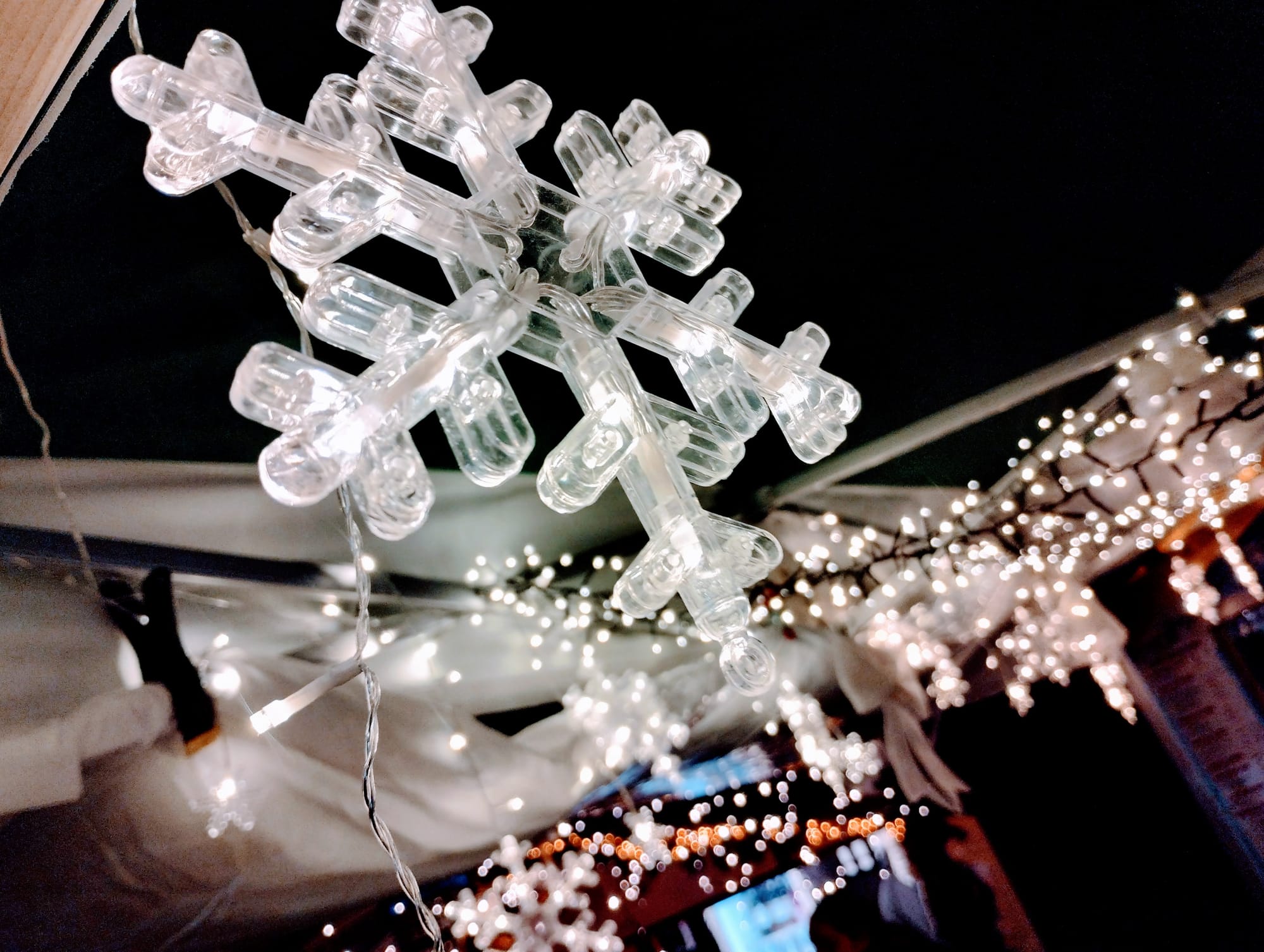
There was not much time to explore on arrival because one of my students was waiting to whisk me to my hostel for check-in, from whence we walked to the Place Saint-Lambert to explore the sparkly-tat, but the station lends itself to photographs from even the most talentless pointy-phone-clicky type of photographer, finger puppet or not.
Most of Liège's Chrismas market is concentrated into the central square, which is where the locals actually voted to build the railway station in 1842, overlooked by the massive baroque Palais Provincial. It's probably therefore the most compact and contained Christmas market as there are hundreds of Christmassy stalls all in one place, which seems a splendid place to end a sparkly-tat tour. We came in from the south-east, which was a masterful stroke on the part of Mr and Mrs Student as it meant full scale of the sparkly goodness was not revealed until we were almost right upon it.
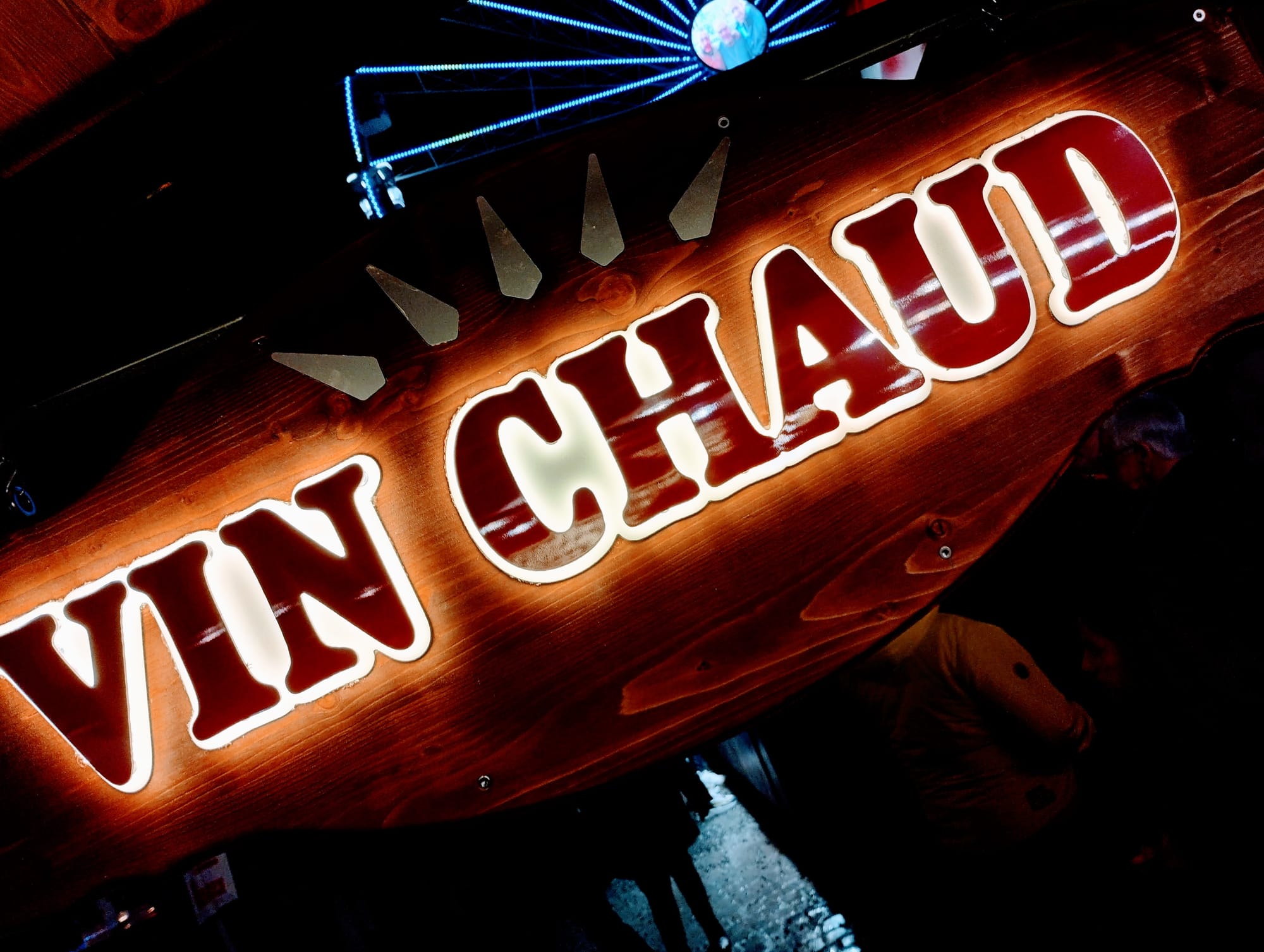
After a little walking around looking at the sparkles, and now in Wallonia, we found ourselves a little spot to consume a lovely vin chaud before exploring our options for food. The Place Saint-Lambert is flanked by restaurants on the north side all integrated into the festivities, and after some wandering we installed ourselves on the terrace of a Lebanese restaurant under a very welcome patio heater and consumed some exquisite food. I had a vegetarian assiette, abundant with falafel and other tasty treats. Mr Student insisted I try a very tasty serving of Chimay Rouge. I did not regret this suggestion.
The second part of the market, near the cathedral, is home to an ice-rink which was not ice at the time we passed. It had never occurred to me before that there is no point in keeping an icerink as ice when there are no people skating on it, so in the late evening it's an icy-cold paddling pool, which I think sounds a much better proposition as a way of making children noisy.
We finished up with another vin chaud, then walked back to my hostel.
